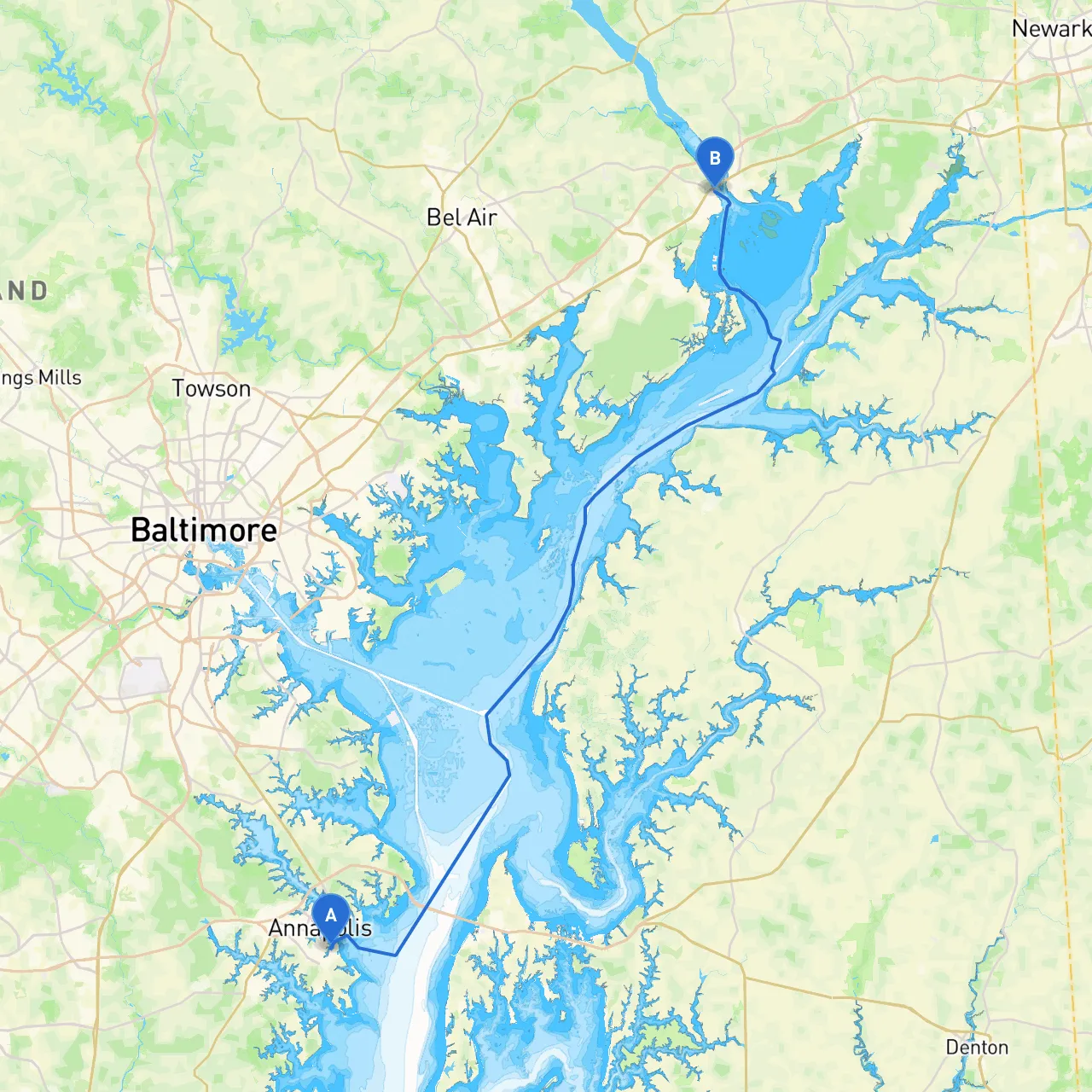Pilotage Plan: Annapolis, Maryland to Havre De Grace, MD
Starting Point: Annapolis, Maryland Ending Point: Havre De Grace, Maryland
1. Route Overview
This route traverses the scenic Chesapeake Bay, providing an ideal cruising experience for both novice and seasoned boaters. The trip is approximately 30 nautical miles, taking you through diverse waterways and rich maritime history. This journey is particularly suitable for coastal cruisers who appreciate a healthy balance of safety, navigation challenges, and stunning views.
2. Points of Interest along the Route
- Broadneck Park: As soon as you leave Annapolis, consider stopping at Broadneck Park. It's a lovely spot for a picnic or a short walk. While not directly on the water, it's an accessible point to stretch your legs.
- Sandy Point State Park: Located along the western shore of the Chesapeake Bay Bridge, this is a great area to explore for some light hiking and beautiful views. The park also has a boat ramp if you need a quick rest.
- Matapeake Park: Just across from the Bay Bridge, this a nice place for a quick shore stop, allowing boaters to enjoy the beach and views of the bridge.
- Tolly Point (Huntington Park): A great place to anchor and take a break. The park has walking trails and lovely picnic spots right by the bay.
- Cecil County: As you continue north, look out for Cecil County's beautiful waterfront areas. The serene environment is perfect for a quiet stop.
3. Shelter Options
The Chesapeake Bay is generally well protected, but should weather turn inclement, some excellent shelter options include:
- Spa Creek, Annapolis: If you haven't departed yet and the weather looks unpredictable, it’s a safe harbor with nearby amenities.
- Martin State Airport Area: If you're traveling north and rough weather is forecasted, consider navigating to the Patapsco River, where you can find well-marked marinas.
- Cottage Lane Cove: Located near Perryville on the Susquehanna River, this is another secure anchorage during bad weather.
4. Navigation Considerations
Navigating the Chesapeake Bay requires awareness of several key markers and aids:
- Buoy Systems: Pay attention to the red and green buoy systems marking the channel. Red buoys are on your right when returning from sea.
- Chesapeake Bay Bridge: This iconic structure must be respected; ensure you stay beneath the recommended height clearance of 186 feet.
- Tides and Currents: Familiarize yourself with local tide charts. The Bay experiences significant tidal fluctuations, which can affect your navigation, especially in shallow areas.
- Commercial Traffic: Watch for large vessels, especially around the shipping channels. They have the right of way and exhibit limited maneuverability.
- Local Regulations: Familiarize yourself with speed limits in specific areas, especially in marinas and near wildlife refuges. Always stay vigilant of no-wake zones.
5. Safety Equipment and Practices
- Life Jackets: Ensure all crew members are wearing properly fitted life jackets. This is non-negotiable for safety.
- VHF Radio: Keep a marine VHF radio on hand. Regularly listen to Channel 16 for updates on weather and navigation announcements.
- Emergency Kit: Carry a well-stocked first aid kit and ensure that your boat has fire extinguishers as per Coast Guard regulations.
- Weather Apps: Utilize savvy navvy for comprehensive navigation and weather updates. Other useful apps include MarineTraffic and Navionics for tracking marine traffic and reviewing charts.
Conclusion
This pilotage plan offers a delightful mix of natural beauty, opportunities for exploration, and critical safety measures to ensure a secure voyage from Annapolis to Havre De Grace. Enjoy this wonderful experience, stay alert to navigational aids, and remember to embrace the peaceful atmosphere that the Chesapeake Bay provides. Whether you’re an experienced boater or just starting out, this journey is a perfect blend of adventure and relaxation. Happy cruising!

